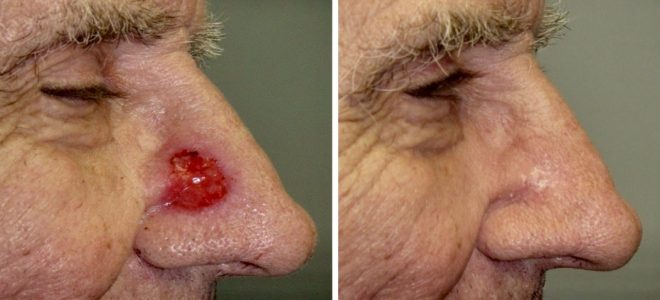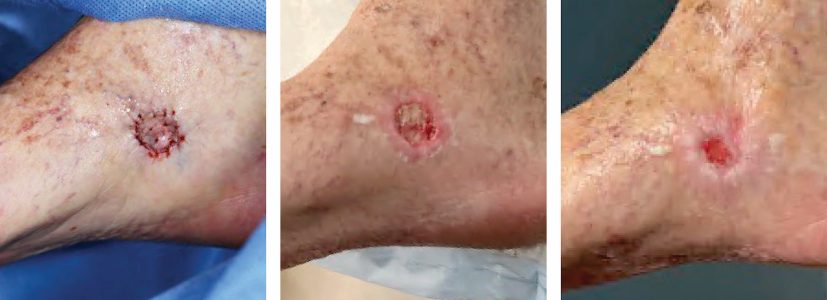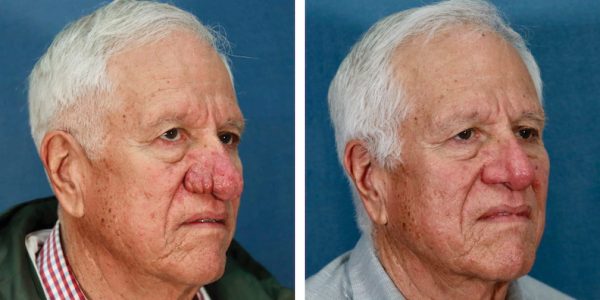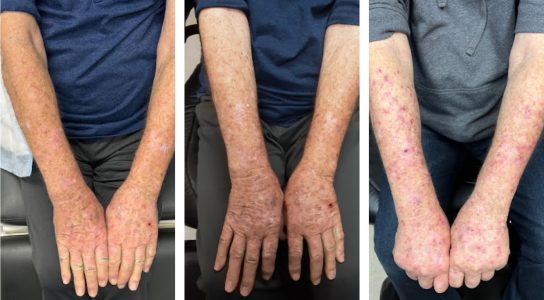
ABOUT EXCISION WITH FROZEN SECTION
An excision with frozen sections is a procedure in which skin cancer is removed and the tissue specimen is then frozen. Next, several cuts are made through the frozen tissue, stained with special dyes and inspected by a pathologist or dermatopathologist for tumors cells near the surgical cut margin. This process is repeated until no tumor cells are present under the microscope. There is only a 95% accuracy rate because the skin cancer is not mapped out and only isolated areas are examined. This means in about 5% of cases, tumor cells may be present a few days after the procedure and requires further treatment.
EXCISIONAL SURGERY WITH CONVENTIONAL FROZEN SECTION MARGIN CONTROL
Often performed in a hospital setting, this surgical procedure involves checking the pathology with frozen sections prior to closing the surgical wound. Additional tissue is removed prior to closing the wound If the tumor extends to the edges of the specimen.
ADVANTAGES AND DISADVANTAGES OF EITHER MOH'S OR RAPID FROZEN SECTION TREATMENT
Moh's micrographic surgery has the advantage of a more accurate initial analysis of the tissue. In areas such as the face, nose, or where preservation of skin is important for reconstruction this is especially of value. The main disadvantage of Moh's is that it might take several hours to complete or you may have days between excision (removal of skin cancer) and reconstructive surgery to close the defect. Especially in areas of the face and body which have plenty of skin available for reconstruction, Moh’s micrographic surgery is often unnecessary and time consuming.
VARIOUS REASONS FOR USING THE FROZEN SECTION TECHNIQUE
If a tumor appears to have spread (metastasized), a sample is sent for frozen section for confirmation. This helps when determining whether there is any point in continuing the operation. Usually, surgical excision is performed only if there is a chance to remove all cancer. If the tumor has spread, a more conservative approach is taken.
If a tumor has been removed but it is unclear whether the margin (border) is clear, frozen section is used to determine if further resection is needed for clear margins.
In a sentinel lymph node biopsy, frozen section can help determine whether the sentinel node containing tumor tissue requires further lymph node dissection, while a benign node will avoid such a procedure.
Related Articles
Temporoparietal Fasciocutaneous Island Flap for Forehead and Anterior Scalp Reconstruction
Cerclage Closure Technique
Superficial Radiotherapy: Long Term Follow-Up of Highly Selected Basal and Squamous Cell Carcinomas in Skin Cancer Patients
Chronic Open Wound Management with Wound Vac
Dermaplaning and Dermabrasion to Treat Rhinophyma
Augmenting Efficacy of Topical 5-FU for Actinic Keratoses and Skin Cancer
STAY UP TO DATE
Receive research updates, inspiring stories, healthy living tips and more.
CME ACCREDITED SKIN CANCER CONFERENCE
Earn your CME credits at the SCARS Foundation Monthly Skin Cancer Conference
FOLLOW US
ELEVATING THE STANDARDS OF SKIN CANCER MANAGEMENT.






